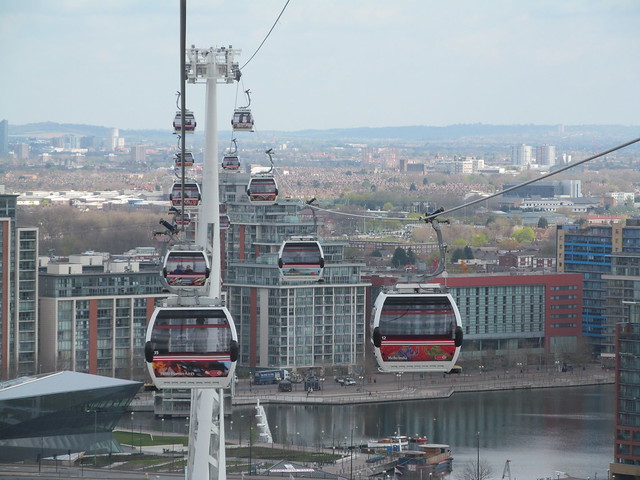Since the Emirates Air Line (EAL) cable car first took flight in 2012, local media coverage of the system has not been particularly kind. Detractors have called it everything and anything you could think of: white elephant, dangleway, Boris’s vanity project — just to name a few.
Unfortunately, what’s often lost in this conversation is the many successes experienced by London’s first and only urban gondola. As discussed in a previous post, an oft-forgotten but very important point is that the cable car actually makes a profit — a surplus of US$1.25mm (£1mm) since its opening.
How many other public transport systems can say that? Very few except for a handful in highly dense Asian cities.
A preliminary examination of the cable car’s performance data also depicts a much rosier picture than what is often associated with the cable car. In particular, the customer satisfaction report from Jan-Mar 2016 provides some great insight.
Based on customer surveys conducted for all Transport for London (Tfl) modes, the Emirates Air Line cable car has consistently received the highest level of customer satisfaction at 93-94 points. Comparatively speaking, this is ~8-12 points higher than the customer satisfaction levels seen on the London Underground and ~17-19 points higher than London Roads.
The urban cable car has also received much praise from sampled passengers (base size: 590-861) where personal safety, helpfulness/appearance of staff, ease of getting into cabin, and warmth /friendliness of staff were ranked as the system’s biggest strengths.
As for it weaknesses, respondents suggested that it did not have the best “Value for Money”. This seems somewhat counter-intuitive since a one-way adult ticket price is just USD$4.25-5.50 (£3.40-4.50). At this price, it would be more expensive than the mass transit cable cars in South America, but would be considered a huge bargain if compared to other recreational cable cars in major metropolitan cities. For instance, base adult fares for the Ngong Ping 360 (Hong Kong) and the Mount Faber Cable Car (Singapore) both start at a ticket price of more than US$23.00!
Even in local terms, considering that entrance fees for “observation/sightseeing” attractions such as the London Eye (USD$28.00-34.00) and View from the Shard (USD$32.00-38.50) start at USD$28, the cable car is way more affordable.
While London’s urban gondola isn’t perfect, the cable car’s stories of successes should be shared as much as its stories of failures.




4 Comments
It appears from this list that the Oakland cable-hauled Rapid Transit to Airport connector is doing very well at paying for itself! https://en.wikipedia.org/wiki/Farebox_recovery_ratio#Farebox_ratios_around_the_world
Good observation! It’s interesting that the related news article is written in a fairly negative tone but admits that farebox recovery for the Oakland Airport connector is actually much higher than entire BART system (96% vs 76%). I think this demonstrates how the initial narrative of an infrastructure project can determine its perceived success or failture.
This is a startlingly dishonest interpretation, or a naive one from someone who has never been to London. The reason customer satisfaction is high on the London cable car is because none of the customers is a commuter. Commuting is cramped and uncomfortable in London. Tourists and joy riders are naturally happier.
@Annabel: Thanks for the comment. We’ve actually visited the system ourselves, have been to London many times and can confirm that commuting is quite crowded to say the least! We’re not saying that the cable car is the best or perfect, rather we’re saying that it seems a little unfortunate that the general media has taken a particular stance (read: negative) on the cable car and does not report the other perspective. As discussed in the post, both the cable car’s failures and successes should be shared and discussed equally.